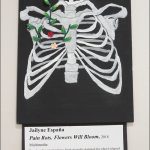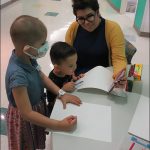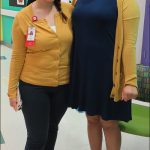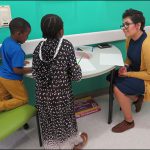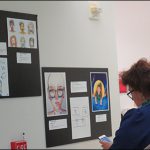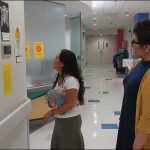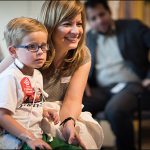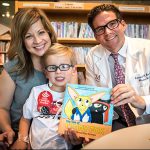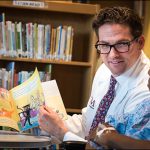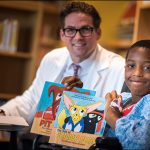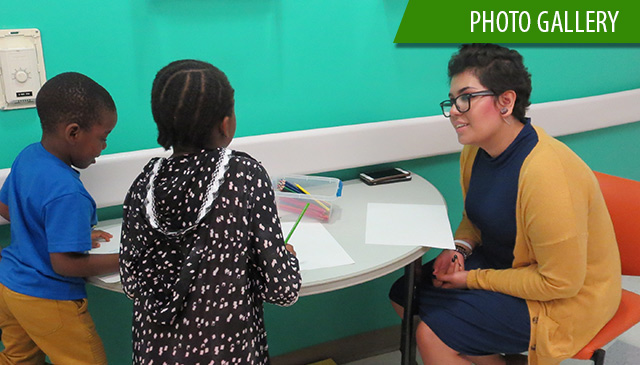 The famous quote “creativity takes courage” exemplifies the all-around essence of 20-year-old Jailyne España, a bone marrow transplant patient at Texas Children’s. She has used her artistic ability to soothe her physical pain during the treatment process, as well as uplift other patients.
The famous quote “creativity takes courage” exemplifies the all-around essence of 20-year-old Jailyne España, a bone marrow transplant patient at Texas Children’s. She has used her artistic ability to soothe her physical pain during the treatment process, as well as uplift other patients.
“It was very therapeutic, I felt rotten during treatment,” said España. “To do something beautiful and see it come to life on paper, made this so much better.”
On June 1, España was approached by the unit’s child life specialist about allowing her work to be presented in the bone marrow transplant unit. Upon her agreement, over a dozen meticulous original pieces of her art were placed on the walls with a small description, to inspire other outpatients, their families and employees.
On a table just as you walk through the doors of the hall were color pencils and paper, available for patients to show their drawing skills; but most importantly, take their minds off any negativity or pain that they have or will encounter.
“I did this because I wanted them know that they are not alone, and so they can feel validated,” she said. “I want them to focus on positive energy. It doesn’t necessarily have to be art, they just should choose something they can focus on.”
España was diagnosed with stage four non-Hodgkin’s lymphoma on April 20, 2016, and had a bone marrow transplant in July of the following year.
“I’ve relapsed twice,” said España. “But today I am very happy to say that I’m 100 percent cancer free.”
She started drawing at a young age, stopped when she became a teen, and then regained her love for art around the time she was diagnosed.
“Throughout my treatment I use art as an outlet for all the emotions that I can’t put into words,” she said. “I use art to turn something painful into something beautiful.”
Last year, she submitted one of her pieces to Making A Mark, and eventually her dreams came true when she was announced as the recipient of the purple ribbon recognition.
Making A Mark is an exhibition of art and creative writing by children touched by cancer and blood disorders at Texas Children’s Hospital Cancer and Hematology Centers. This widely cherished project is presented by The Periwinkle Foundation, an organization that develops and provides programs that positively change the lives of children, who are challenged by cancer and other life threatening illnesses.
The purple ribbon pieces are selected by a panel of judges from the art and business community. The judges are asked to select pieces that they feel carry a message of positive awareness of childhood cancer and blood disorders.
Diana Sanchez is a visiting artist who works with Texas Children’s patients to help them express their feelings in a creative method that is, at times, highly therapeutic. She met España a year ago and has been incredibly impressed with her talent.
“Quickly I realized that her creative intelligence was evident in her imagery and painting techniques,” said Sanchez. “She has been able to access from her soul to transform her feelings and words into forms, figures, and colors. Her honesty and humility shines through in her and in her art. She is a true artist.”
In the Fall España will be embarking on another pivotal journey as she starts her college matriculation at The University of Houston, as a music major and visual arts minor.
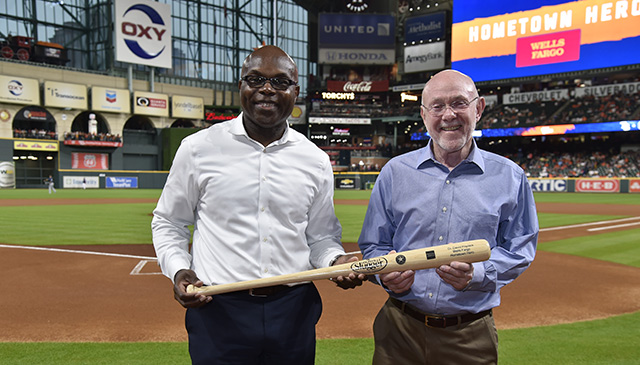 Cancer Center Director Dr. David Poplack was recognized as a Hometown Hero at the June 20 Houston Astros game against the Tampa Bay Rays at Minute Maid Park.
Cancer Center Director Dr. David Poplack was recognized as a Hometown Hero at the June 20 Houston Astros game against the Tampa Bay Rays at Minute Maid Park.

 Dr. Zhandong Liu, assistant professor at Baylor College of Medicine and researcher at the Jan and Dan Duncan Neurological Research Institute (NRI) at Texas Children’s has received a distinguished service award from the International Association for Intelligent Biology and Medicine (IAIBM).
Dr. Zhandong Liu, assistant professor at Baylor College of Medicine and researcher at the Jan and Dan Duncan Neurological Research Institute (NRI) at Texas Children’s has received a distinguished service award from the International Association for Intelligent Biology and Medicine (IAIBM).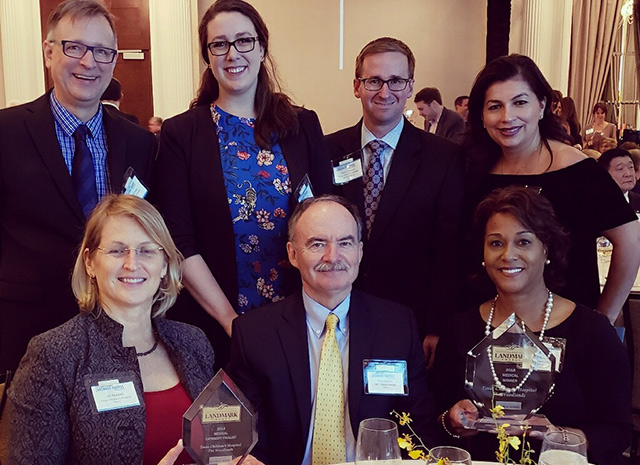 Earlier this year the Houston Business Journal’s 2018 Landmark Awards selected it’s winners for the top commercial real estate projects in Houston. Our very own Texas Children’s Hospital, The Woodlands campus, won in the medical category.
Earlier this year the Houston Business Journal’s 2018 Landmark Awards selected it’s winners for the top commercial real estate projects in Houston. Our very own Texas Children’s Hospital, The Woodlands campus, won in the medical category.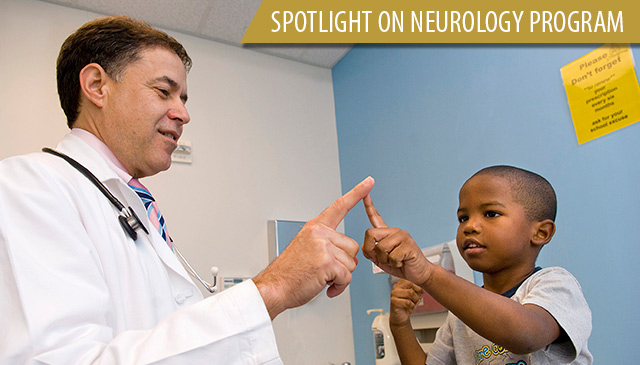 As Texas Children’s continues to expand its physical footprint as a leader in pediatric care, Texas Children’s Neurology Program is growing by leaps and bounds. As one of the largest pediatric neurology service providers in the nation, more than 30,000 patient encounters occur each year at Texas Children’s Neuroscience Center.
As Texas Children’s continues to expand its physical footprint as a leader in pediatric care, Texas Children’s Neurology Program is growing by leaps and bounds. As one of the largest pediatric neurology service providers in the nation, more than 30,000 patient encounters occur each year at Texas Children’s Neuroscience Center.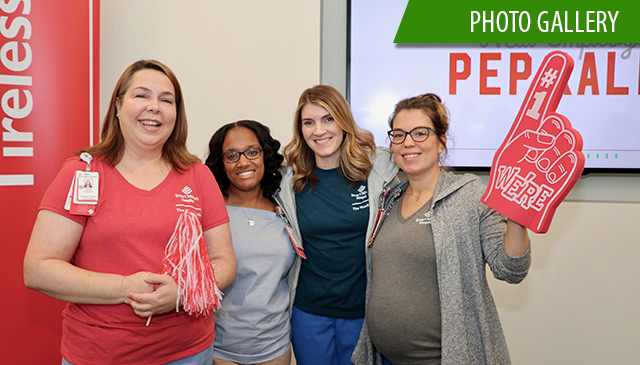 A little more than one year after opening the doors of the hospital to its first patient, hundreds of new and recent hires at The Woodlands attended their first Mark A. Wallace New Employee Pep Rally – waving red pompoms and foam fingers, nodding along to classic dance music, noshing on refreshments and enjoying the opportunity to meet, greet and even snap photos with Mr. Wallace himself.
A little more than one year after opening the doors of the hospital to its first patient, hundreds of new and recent hires at The Woodlands attended their first Mark A. Wallace New Employee Pep Rally – waving red pompoms and foam fingers, nodding along to classic dance music, noshing on refreshments and enjoying the opportunity to meet, greet and even snap photos with Mr. Wallace himself.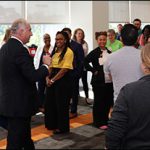
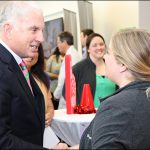
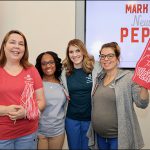
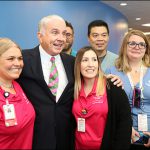

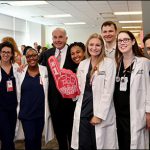

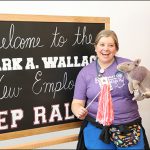
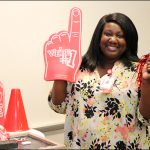
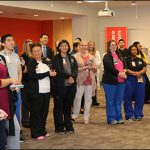
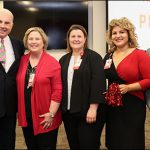
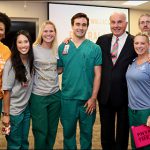
 The famous quote “creativity takes courage” exemplifies the all-around essence of 20-year-old Jailyne España, a bone marrow transplant patient at Texas Children’s. She has used her artistic ability to soothe her physical pain during the treatment process, as well as uplift other patients.
The famous quote “creativity takes courage” exemplifies the all-around essence of 20-year-old Jailyne España, a bone marrow transplant patient at Texas Children’s. She has used her artistic ability to soothe her physical pain during the treatment process, as well as uplift other patients.





